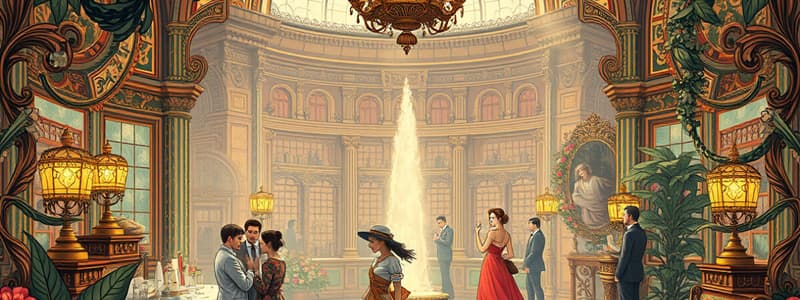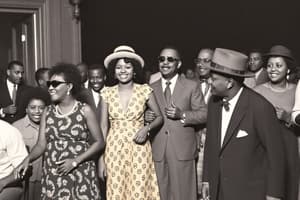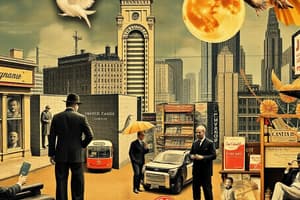Podcast
Questions and Answers
What was a significant factor contributing to household debt during the 1920s?
What was a significant factor contributing to household debt during the 1920s?
- Turn to credit for purchasing goods (correct)
- Higher savings rates among consumers
- Decline in the price of goods
- Increased wages for middle-class workers
Which innovation in manufacturing contributed to the economic boom of the 1920s?
Which innovation in manufacturing contributed to the economic boom of the 1920s?
- Robotic automation
- 3D printing technology
- Online commerce
- Assembly line production (correct)
What cultural shift was exemplified by the flapper movement during the 1920s?
What cultural shift was exemplified by the flapper movement during the 1920s?
- Rejection of traditional gender norms (correct)
- Increased participation in women's suffrage
- Conformity in fashion and behavior
- Reinforcement of traditional gender roles
What economic condition was characterized by overconsumption and market speculation during the 1920s?
What economic condition was characterized by overconsumption and market speculation during the 1920s?
Which event marked the beginning of the Great Depression?
Which event marked the beginning of the Great Depression?
Flashcards are hidden until you start studying
Study Notes
Economic and Cultural Boom
- The 1920s in the United States are referred to as the Roaring Twenties, a time of significant economic and cultural growth.
- Advances in technology enabled American companies to produce new, affordable goods, which fueled a consumer culture.
- The Ford Motor Company revolutionized manufacturing with innovative methods, especially in automobile production.
Consumer Culture and Household Debt
- Middle-class Americans embraced consumerism, leading to transformative lifestyles supported by products like radios, cars, and vacuums.
- The reliance on credit increased significantly, resulting in a dramatic rise in household debt throughout the decade.
Pop Culture and Social Change
- The era was marked by a free-spirited pop culture, epitomized by flappers who defied traditional gender norms.
- This cultural shift was often attributed to President Calvin Coolidge, viewed as the architect of "Coolidge Prosperity."
Economic Instability and The Great Depression
- The 1920s saw significant overconsumption and speculative practices in the stock market.
- The Wall Street Crash of October 1929 was triggered by market inflation, consumer debt, international dynamics, and changes in interest rates.
- Following the crash, it became clear that Coolidge's policies had fostered an environment conducive to inequality and unchecked market speculation.
- The market crash marked the beginning of the Great Depression.
Studying That Suits You
Use AI to generate personalized quizzes and flashcards to suit your learning preferences.



